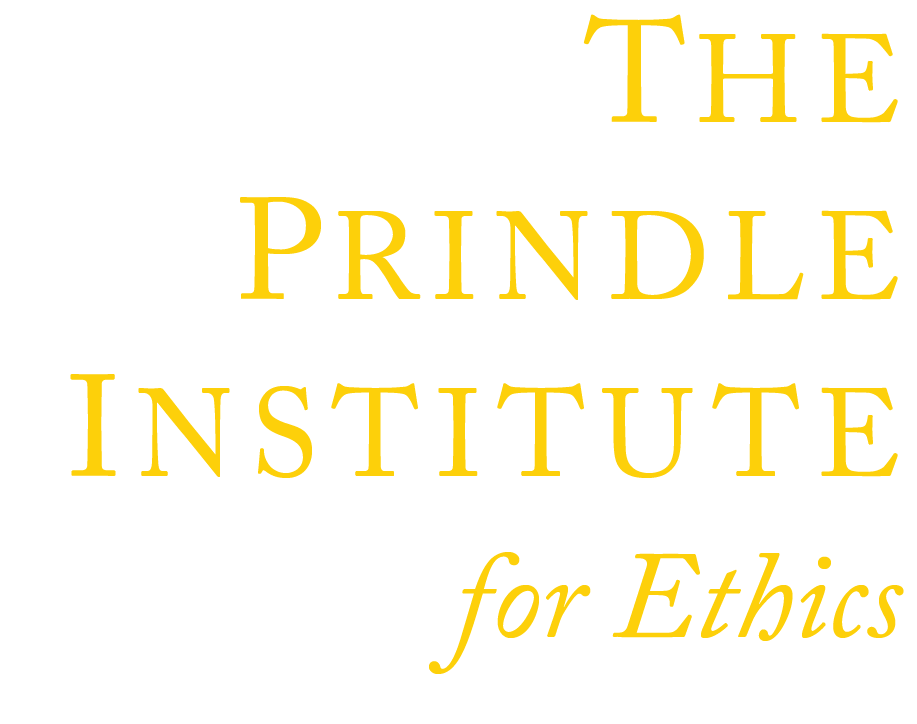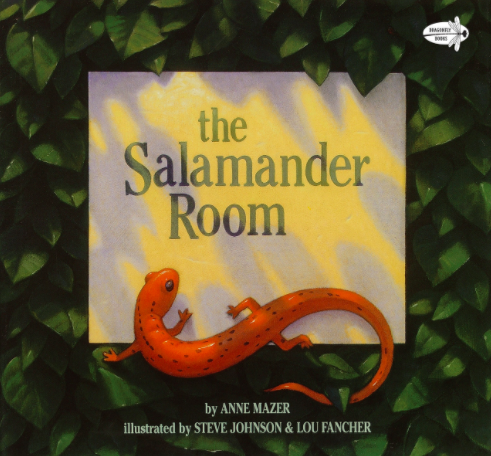The Salamander Room
Book Module Navigation
Summary
The Salamander Room examines the conflict between nature and culture and raises further questions about environmental ethics and aesthetics.
A boy named Brian finds a salamander and brings it home to be his pet. His mother reminds him that salamanders need friends. Salamander friends need bugs to feed them, and bugs need birds to keep them from multiplying too fast, and birds need trees to sit in, and trees need light and rain. As his mother reminds him of all the necessary components of a salamander’s home, Brian replies with grander and grander plans to turn his room into a salamander room, a place where he and his new pet can sleep beneath the stars and leaves.
Read aloud video by Reading for Rainy Days
Guidelines for Philosophical Discussion
The Salamander Room, with its rich illustrations and often poetic language, might provoke a longing in many readers for their own patch of trees and grass. Brian is transfixed by the beauty of the natural world and dreams about ways to bring nature into his life. By the end of the book, Brian’s imaginary room has almost entirely become a forest without even a roof overhead. But the salamander room is clearly constructed only of his dreams, and is not a practical or possible solution to his yearning for nature. Rather, it presents a philosophical problem.
Philosophers dating back at least to Henry David Thoreau (1854) have written with dismay about this separation between people and nature. In an increasingly urban world of carpets, cozy beds, electric lights, and electric entertainment, people have less and less contact with the natural world of trees and salamanders. Environmental philosophers, including Thoreau, John Muir, and Aldo Leopold, have argued that material and intellectual alienation from nature are serious problems for the modern person. These philosophers proposed that the contemplation and appreciation of nature is spiritually uplifting and healing, and is an essential human need. Nature is therefore seen as beautiful and valuable in its own right and worthy of protection. Such thinking is a foundation for many conservation movements, which have resulted in national parks around the world and which fuel ongoing debates over land use that are only intensifying today.
The Salamander Room illustrates several important tensions within environmental philosophy. Using this story, your task as a facilitator is to get students thinking about nature and their own relationship to it. Brian’s room is at once very beautiful, but also impossible. By having children address why it is that they find his room beautiful (or ugly, as the case may be), and why trees and salamanders can’t live in the artificial environments we create, they may begin to address fundamental questions.
The questions the story raises can be divided roughly into four established areas of environmental philosophy:
Defining Nature
Before we can discuss our role in nature and our responsibility to protect or exploit it, we must define just what nature is. In its broadest sense, the term nature refers to virtually all aspects of our physical world. Yet few people would define a computer as “natural.” The lines between what is natural and what is artificial (i.e. the product of human culture) can be difficult to determine–indeed, many doubt if such a division can ever exist and consider this an outdated and misleading idea. Just what is nature, and how can something be “unnatural”?
Environmental Aesthetics
Environmental aesthetics seeks to understand why we perceive an environment as beautiful or ugly. The field arose in the nineteenth century out of the established study of aesthetics in art. Most national parks in the world were created because of their uniquely pleasing aesthetic qualities: Yosemite, for example, was created because of the towering, sublime geology described by John Muir. Some philosophers propose that we have an inborn appreciation of natural beauty, while others contend that our culture (i.e. photographs, poems, and paintings that surround us) strongly affect our sense of what is beautiful. So what makes nature beautiful to us?
Environmental Ethics
Environmental ethics is a huge field that deals with questions about how humans should interact with their environment. In particular, The Salamander Room raises important questions about ownership in nature. Trees, rivers, rocks, and animals do not in their own right belong to any one person or group of people. How do we determine who has a right to certain resources, and who does not? Furthermore, is it morally right to have ownership of another living being or a vital shared resource like a river or forest?
The Nature-Culture Divide
Western thinking has historically assumed a fundamental distinction between humanity, including the products of humanity (our technology, art, and thoughts), and the natural world. The Bible, for example, proclaimed that humans were created to “have dominion over all the earth.” This foundational belief places humanity apart and above nature. Indeed, even the national parks system in many countries follows this division, since the mandate of such parks is to keep large tracts of wilderness “natural,” which is to say free of human influences. Yet over the last century and a half, evolutionary biology has challenged this belief, illustrating that humans are, or not to long ago were, animals–which is to say part of nature. This resurrects important and fundamental questions. What is it that makes us different from other animals? Are humans a part of nature or not?
Questions for Philosophical Discussion
Before reading, ask if anyone in the class has ever seen a salamander. This should encourage several minutes of loosely structured discussion about the students’ own encounters with the natural world, which allows them to better empathize with Brian. During reading, make sure everyone gets a chance to look carefully at the illustrations, since the ideas and the mood of this story are communicated at least as much through illustration as through language.
What is Nature?
- What makes Brian’s salamander room look like a forest?
- Is Brian’s salamander room actually a forest?
- If Brian just had trees in his room, would it be a forest? What if he had trees and birds? What if he had a river? What if he knocked down the walls? etc.
- What’s the difference between a salamander room and a forest?
- Is a forest nature?
- Is a salamander room nature?
- What is nature?
Environmental Aesthetics
- What’s the most beautiful outside place you can think of?
- Why do you think that place is beautiful?
- Do you think Brian’s room is beautiful?
- What makes the room beautiful?
- Is nature always beautiful?
- What makes nature beautiful?
Environmental Ethics
- Have you ever taken a bug, or a frog, or a salamander home?
- Did you own that animal?
- Did Brian own the salamander?
- Did Brian own the trees and rocks in his room?
- Why did Brian want to have a salamander and then forest in his own room? Why couldn’t he just play in the forest outside?
- What about the land your house is built on, who owns that land?
- Think about (a national park or public natural space the children would be familiar with). Can a person own (the park)?
- Can a person own nature (the park, trees, a river, a mountain, etc.)?
- Can a country own nature?
- How should we decide who gets to use something from nature? Use an example from the discussion.
Nature versus Culture
- Do you think Brian’s idea for a salamander room would work?
- Is Brian’s salamander room a place where you would want to live? Why or why not?
- Why would someone want to live in a forest?
- Why don’t we live in forests? Why do we build cities instead?
- Can you have nature in a city?
- Can you still be part of nature if you are in a city?
- Is a deer part of nature?
- Is a pet dog part of nature?
- Are we part of nature?
- What makes us different from other animals?
Original questions and guidelines for philosophical discussion archived here. Edited June 2020 by The Janet Prindle Institute for Ethics.
Find tips for leading a philosophical discussion on our Resources page.






